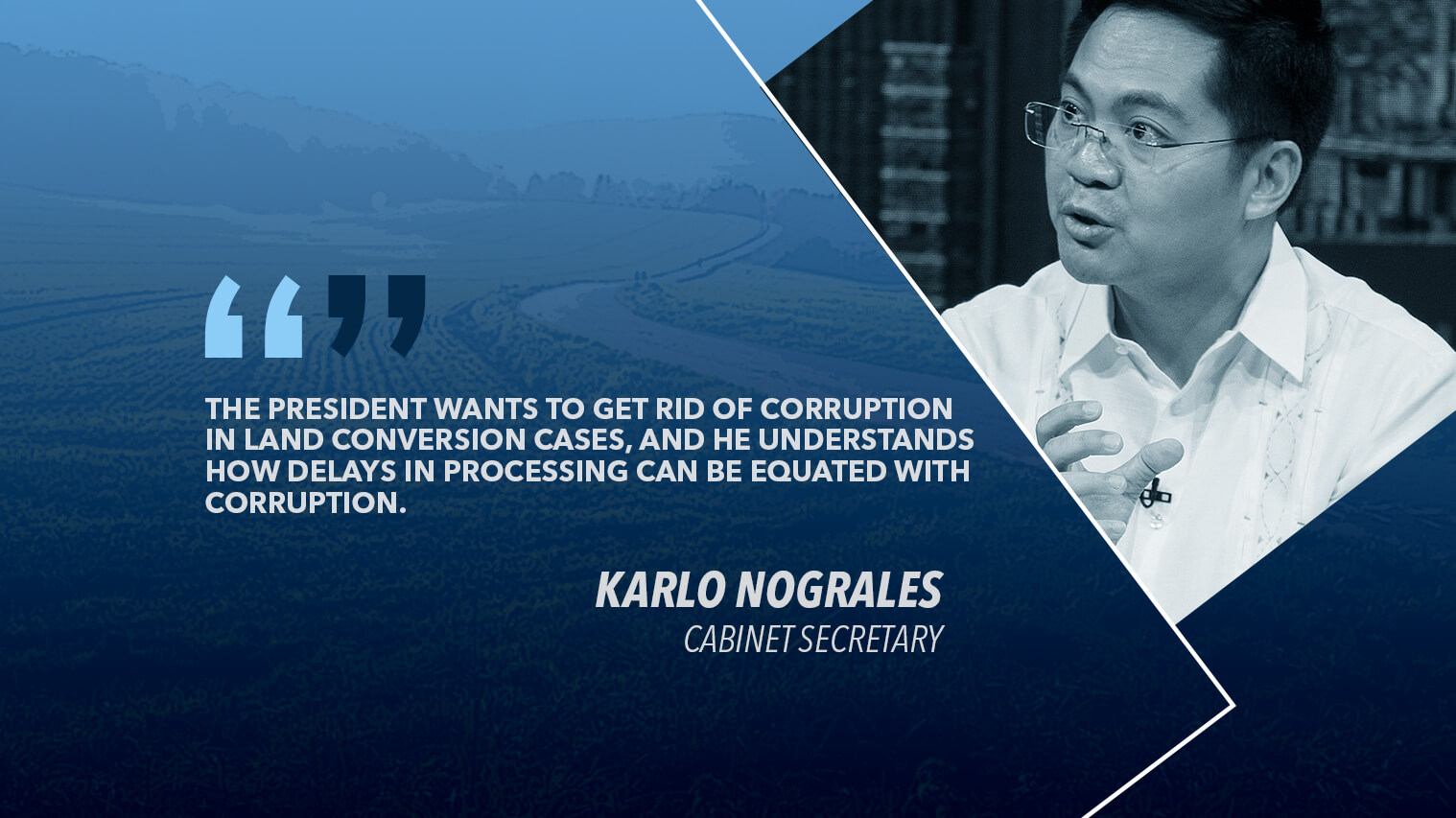Government is addressing issues involved in land conversion cases and working to streamline and fast-track procedures not to accelerate conversions but simply to curb corruption.
This is the assurance given by Cabinet Secretary Karlo Nograles, who on Wednesday said the President had given members of the Cabinet marching orders to study and review the existing process and to address the bottlenecks affecting the resolution of land conversion cases.
“The President wants to get rid of corruption in land conversion cases, and he understands how delays in processing can be equated with corruption. This is why we have been tasked to improve the current systems so that delays can be avoided,” said the Palace official.
There has also been a steady increase in conversion applications over a 15-year period starting in 2003. As of 2018, there remained 140 pending conversion cases with the agrarian reform department.
“The challenge is to get everyone on the same page so that we can identify the choke points in the process and handle these appropriately.”
“At present, classification and conversion of land from agriculture to other uses are handled by the DA (Department of Agriculture) and DAR (Department of Agrarian Reform), respectively, using criteria and regulations specific to these departments. Then there’s the DENR (Department of Environment and Natural Resources) which issues environmental clearances,” explained the former legislator from Davao.
“The challenge is to get everyone on the same page so that we can identify the choke points in the process and handle these appropriately. Once you know what the problems are, coming up with solutions becomes easier––and this is what the agencies involved have been doing,” Nograles shared.
According to Nograles, delays in land conversion cases can be attributed to the acceptance of applications with insufficient documentary requirements; delays in the submission of the applicant’s missing certificates; permits, or licenses; redundant processes in the conversion application; delays in the completion of the posting of the billboards and notices due to opposition from interest groups; and open-ended periods for deliberation in the various levels or offices involved in the evaluation of applications.
“Under the current set up, the various steps involved take weeks and even months to process. Kaya umaabot ng 26 to 36 months to process an application. This, as the President repeatedly says, is unacceptable. This is not the kind of service our people expect or deserve,” stressed Nograles.
“We are now working with the concerned agencies so that the DAR can finalize and implement the new streamlined procedures.”
Nograles revealed that in discussions with the DA, DAR, and DENR, proposed measures to address these delays could shorten the whole conversion application process to 30 working days from receipt of the application with complete supporting documents.
“We are now working with the concerned agencies so that the DAR can finalize and implement the new streamlined procedures. The results of the new procedures will be reported to the President in the next few weeks.”
Among the proposed measures to shorten the application period are the deletion of redundant processes, the acceptance of applications that are accompanied by complete supporting documents, and fixing the time limits for each phase of the application process.


